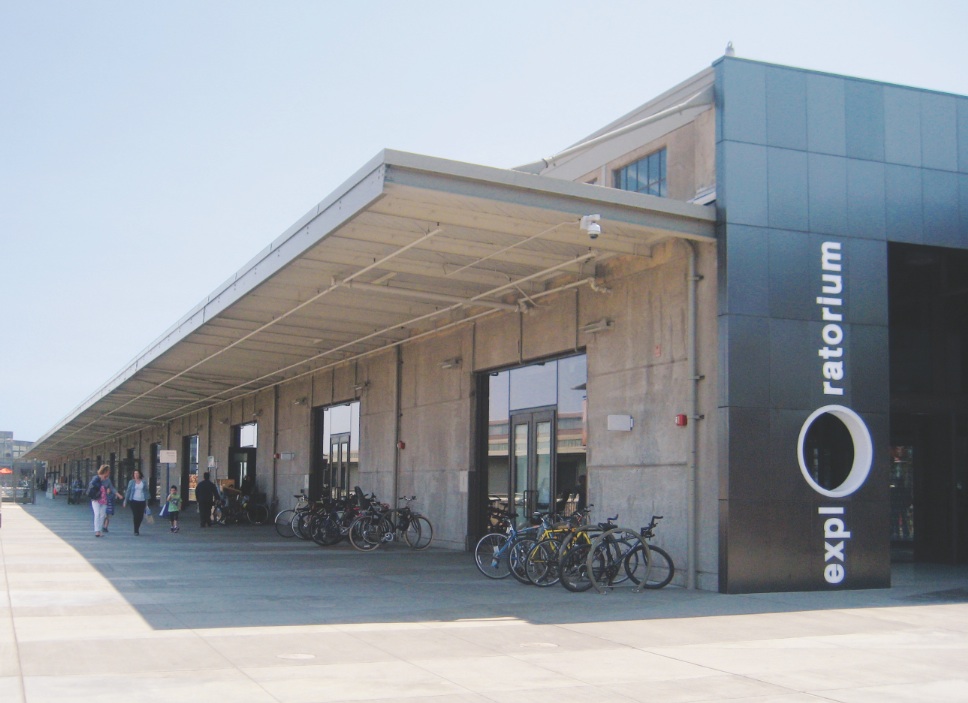Editor's note: This is a sponsored article. All text and images were provided by the sponsor company.
Project name: The Exploratorium in San Francisco
Architect: EHDD
General Contractor: Nibbi Brothers General Contractors
Glazing Contractor: Architectural Glass and Aluminum
Products used: SuperLite II-XL 45 IGU in SAFTIfire HM Framing
The newly-opened Exploratorium has brought energy and excitement to the city’s bustling waterfront. EHDD transformed the historic Pier 15, built in 1915, to a 330,000 square foot indoor and outdoor campus, being touted as the largest net-zero building in the city and potentially the largest net-zero museum in the world.
EHDD kept the original structure and concrete cladding of the building but removed most of the loading dock doors on the north and south sides of the pier, replacing them with glazed door assemblies in order to bring in natural light and provide convenient access between the inside space and the outdoor exhibits. By using glass, the architects were also able to make a connection to the outdoors, with the south side offering views of the Bay Bridge and north side offering views of the San Francisco skyline – putting the city itself and its iconic landmarks on display.
However, the location of the Exploratorium’s new home posed a unique challenge. “The exterior portions of the piers are designed to function similar to rated interior egress corridors in the event of a fire,” says Katherine Miller, the project architect for the Exploratorium. Not wanting to sacrifice daylight and views, the designers opted to use fire rated glass for the exterior doors so that people evacuating the site via the piers will be protected in case a fire breaks out from inside the building.
SAFTI FIRST supplied a total of 19 pairs of 45-minute steel doors – 11 pairs on north side and 8 pairs on the south side – using SuperLite II-XL 45 IGU in SAFTIfire HM Framing. The SuperLite II-XL 45 glazing was insulated with tempered low-e glazing on the #2 surface for energy efficiency. The frames were painted to match the adjacent non-rated systems.
8 pairs of SuperLite II-XL 45 IGU in HM Door Framing on the south side provides easy access to the outdoor exhibits and views of the Bay Bridge.
SuperLite II-XL 45 is a clear, fire resistive glazing product tested to ASTM E-119/NFPA 251/UL 263 with hose stream and meets NFPA 252/257 for use in door and window assemblies. It meets CPSC Cat. II impact safety and is available in large sizes, which was critical because some of the doors had a day light opening of 97 inches high.
“SAFTI FIRST was able to achieve the desired glass heights, and was less expensive than other options,” adds Katherine. SuperLite II-XL 45 has the largest sizes for clear 45 minute fire and safety rated glazing, with a maximum clear view area of 4,952 square inches and a maximum clear view height or width 124 inches. It is made here in the USA at SAFTI FIRST’s manufacturing facility in California, ensuring competitive pricing versus fire resistive multilaminates or fire protective filmed or laminated ceramics, which are either imported from Europe of Asia.
Aside from large sizes and competitive pricing, SuperLite II-XL 45 was chosen because “it was a good color match to the adjacent clear low-e coated glass,” says Katherine. SuperLite II-XL 45 has superior optical clarity and does not have any amber tints typically seen in fire rated ceramics.
Further expansion is planned for the neighboring Pier 17. For now, inquisitive minds of any age can satisfy their curiosities at the Exploratorium’s new spectacular – and safe – space along the embarcadero.
Related Stories
| Oct 12, 2010
Cell and Genome Sciences Building, Farmington, Conn.
27th Annual Reconstruction Awards—Silver Award. Administrators at the University of Connecticut Health Center in Farmington didn’t think much of the 1970s building they planned to turn into the school’s Cell and Genome Sciences Building. It’s not that the former toxicology research facility was in such terrible shape, but the 117,800-sf structure had almost no windows and its interior was dark and chopped up.
| Oct 6, 2010
Windows Keep Green Goals in View
The DOE's National Renewable Energy Laboratory has almost 600 window openings, and yet it's targeting LEED Platinum, net-zero energy use, and 50% improvement over ASHRAE 90.1. How the window ‘problem’ is part of the solution.
| Sep 13, 2010
Triple-LEED for Engineering Firm's HQ
With more than 250 LEED projects in the works, Enermodal Engineering is Canada's most prolific green building consulting firm. In 2007, with the firm outgrowing its home office in Kitchener, Ont., the decision was made go all out with a new green building. The goal: triple Platinum for New Construction, Commercial Interiors, and Existing Buildings: O&M.
| Aug 11, 2010
Using physical mockups to identify curtain wall design flaws
Part two of a five-part series on diagnosing and avoiding cladding, glazing, and roofing failures from building forensics expert IBA Consultants.











